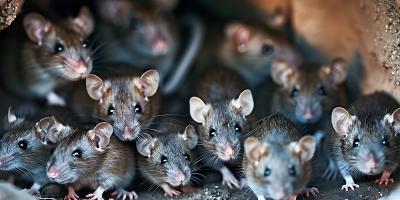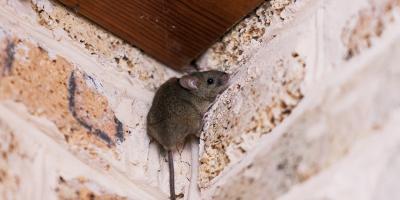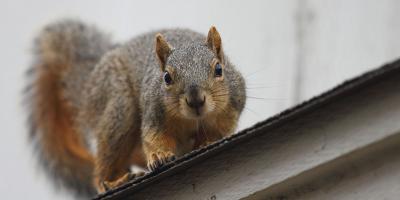What Does a Mouse Hole Really Look Like?

When you think of mouse holes, do you conjure an image straight out of a Tom and Jerry cartoon of a perfectly symmetrical archway carved into the kitchen baseboard, like the entrance to a miniature train tunnel? If you do, you’re not alone.
Most people don’t know how to recognize an actual mouse hole, thanks in part to this cartoonish idea we got as kids. But as an adult, being able to recognize the places where mice and other rodents can get into your home is a useful skill.
Debunking the Mouse Hole Myth
First off, mice and rats don’t carve elaborate entryways for themselves. Like most creatures, they do only as much work as necessary. Mice can actually squeeze through a hole as small as a nickel – rats need only the circumference of a half-dollar. Yes, those holes could technically be in the baseboards, but could also be under or behind kitchen cabinets, inside closets, near doors or fireplaces or near plumbing pipes and drains.
Mouse holes are also just as likely to provide a conduit between your home’s main level and an attic or basement as they are with the outside. But wherever you find rodent holes, the first step in preventing or treating an infestation is to seal them up.
Deny them Entry!
Mice may be cute, cuddly companions in cartoons, but in reality they pose a serious threat to human health and safety. Mice can make humans very, very sick, by both spreading viruses, as well as parasites. Some diseases people can contract from mice include hantavirus, bubonic plague, salmonellosis and rat-bite fever.
Not only that, mice can wreak havoc on your home’s structure in ways that can create a safety hazard – for example, mice love to gnaw through the plastic shielding surrounding copper electrical wire, which can expose the wire and cause a potentially fire-starting short.
If you discover a mouse problem, although it is definitely important to set traps (and to set them correctly so they actually lure their intended targets), if you skip sealing up the cracks and holes where the mice are getting into your home, you’re going to be fighting an uphill battle.
Any hole is potentially a mouse hole and should be treated as such. That means sealing it up in a way that will prevent mice from burrowing through it again. One popular method is to stuff the hole with steel wool then seal with caulking compound. This ensures that mice won’t be able to chew their way back through the hole.
Partner with the Pros
Once mice make your home their own, it’s an ongoing struggle to keep them at bay. They’ll continue to try to break back in, even as you seal up old entry points. That’s why it’s important to have a long-term corrective and preventive plan in place.
If this is starting to sound like a tall order, it may be time to consider consulting a rodent control professional. A properly trained pest management expert specializes in taking care of current rodent invaders, as well as preventing new ones from entering again in the future. That’s what we call ultimate peace of mind.
Learn more about our rodent control process here.



